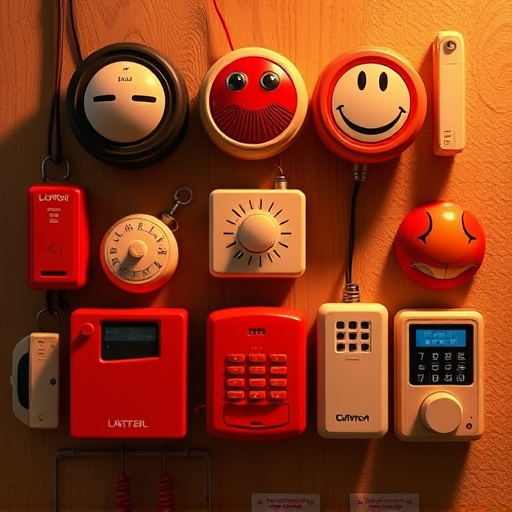Personal distress signals, amplified by technology like Personal Alarms With Phone Alerts, offer vital safety for isolated individuals. These devices combine physical/emotional alerts with GPS tracking, sending location data to contacts or services for swift intervention. While enhancing security for outdoor enthusiasts and solo travelers, this tech raises privacy concerns necessitating robust ethical guidelines to protect user data.
In today’s fast-paced world, recognizing and responding to personal distress signals is more crucial than ever. This article explores the innovative concept of integrating tracking technology with personal alarm systems that send phone alerts, enhancing safety measures. We delve into understanding the basics of personal distress signals, examining how advanced tracking capabilities can revolutionize emergency response times, and addressing ethical considerations and privacy concerns surrounding this life-saving technology.
- Understanding Personal Distress Signals: The Basics
- Integrating Tracking Technology: Enhancing Safety
- Ethical Considerations and Privacy Concerns
Understanding Personal Distress Signals: The Basics
Personal distress signals are vital indicators that something is wrong and immediate attention is needed. These can manifest in various forms, from physical sensations like rapid heartbeat or sweating to emotional states such as overwhelming fear or despair. Recognizing these signs early is crucial for taking timely action. In today’s digital era, individuals can leverage technology to enhance their safety by utilizing a personal alarm with phone alert functionality.
A Personal Alarm With Phone Alert serves as a powerful tool that combines the instinctive human response to danger with modern communication methods. When activated, it sends an emergency signal to pre-selected contacts or emergency services, providing real-time location data. This capability enables swift intervention and support, especially in situations where individuals might be unable to communicate verbally due to distress or other circumstances.
Integrating Tracking Technology: Enhancing Safety
Integrating tracking technology into personal distress signals has revolutionized safety measures, especially for individuals who frequently find themselves in isolated or high-risk environments. Modern solutions go beyond traditional emergency buttons by employing GPS and real-time data to pinpoint exact locations, a feature facilitated by integrating with smartphones through apps designed to send alerts to pre-selected contacts. This advanced capability is particularly beneficial for outdoor enthusiasts, solo travelers, and individuals with medical conditions that require constant monitoring.
By combining the convenience of mobile devices with emergency response systems, these personal alarms with phone alert features ensure swift action in case of distress. The technology not only facilitates quicker rescue operations but also empowers users by providing a sense of security and peace of mind, knowing help is just a press of a button away.
Ethical Considerations and Privacy Concerns
The development and deployment of personal distress signals with tracking capabilities, such as devices that send alerts to phones, bring both promising benefits and significant ethical considerations. While these tools can serve as a lifeline in emergency situations, allowing users to swiftly summon help, profound privacy concerns arise. Continuous tracking raises questions about data security and the potential for unauthorized surveillance, especially if access to location data is not strictly controlled by the user.
Ethical guidelines must be established to ensure responsible use of such technologies. This includes transparent communication about data collection practices, clear consent mechanisms, and robust safeguards to protect personal information from breaches or misuse. Balancing the need for safety with preserving individual privacy is paramount in designing and implementing effective yet ethical personal alarm systems with phone alert capabilities.
Personal distress signals, especially those capable of sending alerts to a smartphone, offer a powerful tool for enhancing personal safety. By integrating tracking technology with intuitive distress signal systems, individuals can gain peace of mind knowing help is readily accessible. However, as this technology advances, it’s crucial to address ethical considerations and privacy concerns to ensure responsible implementation. A balanced approach that prioritizes user consent, data security, and transparent communication will allow for the effective use of personal alarm with phone alert systems while upholding individual freedoms.
